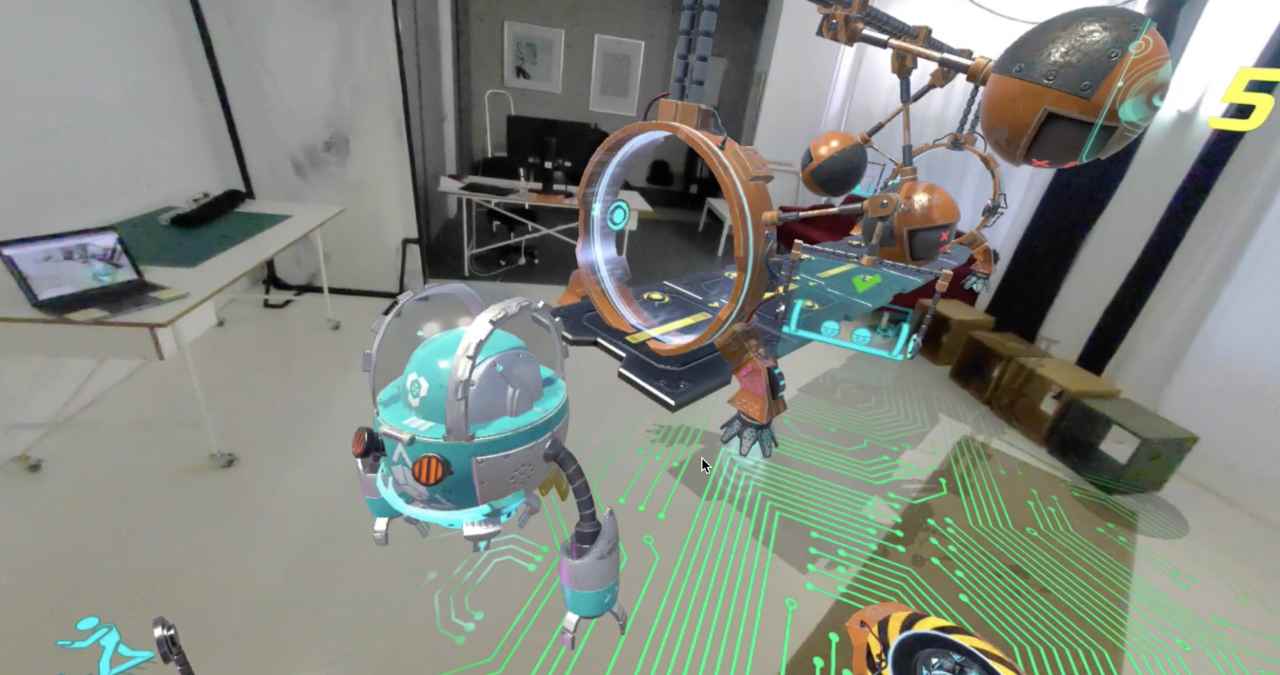Stackaar is turning your living room into an arena. This upcoming title for Meta Quest isn’t about passive VR experiences or seated gameplay. Instead, it leans into mixed reality and local movement, inviting players to duel face-to-face in real-world space enhanced by digital overlays.
With a September release on the roadmap, Stackaar is positioning itself in a growing niche of MR games that use your environment as part of the core loop. The setup is simple fast-paced 1v1 battles with physical presence as the main mechanic. But what makes it stand out is how tightly it integrates the real and virtual layers.
Designed for physical combat without props
Stackaar doesn’t require tracked weapons or extra gear. Players use hand gestures and movement to charge, block, and release attacks. Think energy blasts, directional shields, and dodging in actual space. It’s built to make the most of Quest’s passthrough and spatial mapping features.
The goal isn’t high-fidelity visuals. It’s responsiveness and body-based play. Duels take place in augmented versions of your environment, with enemy avatars and visual effects layered over your real-world walls and furniture. The digital layer reacts to your motion and position, but always in sync with where you are physically.
That structure means fights feel personal. You’re not swinging wildly in an abstract void you’re maneuvering around your own room, using corners for cover or closing distance based on where your opponent is standing in theirs.
Mixed reality as competitive structure
Each match unfolds as a best-of-three duel, with players facing off in mirrored versions of their play spaces. Stackaar maps each user’s room and translates it into a synchronized layout, letting players move freely but fairly within their own environment.
The real-time synchronicity means your opponent is reacting to your gestures as they happen, not just a scripted avatar. That keeps matches tight, reactive, and more grounded than typical VR brawlers where distance can feel disconnected.
There’s no aim-assist or auto-tracking. Success depends on reading the other player’s motion, timing your defenses, and landing hits through well-executed movement. It borrows just enough from fighting games and rhythm combat without leaning too hard in either direction.
Room setup matters, but barriers are low
One of the more practical strengths of Stackaar is its flexibility. While it recommends a minimum space to move comfortably, the game adjusts dynamically to whatever safe zone the Quest detects. That means duels can still work in smaller apartments or uneven layouts.
There’s no heavy calibration, and once scanned, the room overlay is persistent. That lowers the entry barrier for casual players while still allowing depth for those who want to push the movement mechanics.
Visually, the game opts for sharp contrasts and minimal clutter energy trails, pulsing silhouettes, and subtle environmental overlays. It’s not going for realism, and that’s intentional. The clarity supports fast reactions and makes reading gestures intuitive.
Building for local intensity, not online scale
Stackaar isn’t chasing massive online lobbies or asynchronous leaderboards. It’s focused on head-to-head matches whether over local networks or direct invites. That choice keeps latency low and matches more personal, emphasizing presence over population.
It’s a clean design goal: use mixed reality to create tension, not just immersion. By pulling players into their real space and asking them to move with intent, Stackaar creates a kind of VR intimacy that few other competitive games attempt.
Whether it sticks long-term will depend on how it scales beyond novelty. But for now, it’s one of the more interesting takes on what room-scale VR can look like when it leans into simplicity, movement, and real-time tension.
Virtual Reality Explorer & Game Reviewer
Always the first to plug in. VRSCOUT dives head-first into the most immersive VR worlds, analyzing mechanics, comfort, innovation, and that elusive “presence” factor. If he says it’s worth it, it probably is.




